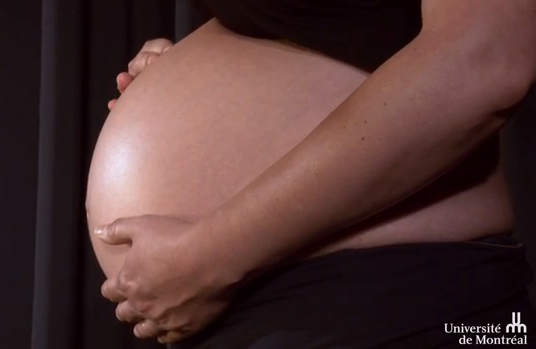|
|||||||||||||||
|

CLICK ON weeks 0 - 40 and follow along every 2 weeks of fetal development
|
||||||||||||||||||||||||||||
|
Antidepressants increase autism risk 87 percent Using antidepressants during pregnancy greatly increases the risk of autism, a ground breaking study has found after looking at outcomes of 145,456 pregnancies where the moms used antidepressants. Professor Anick Bérard PhD, of the University of Montreal and its affiliated CHU Sainte-Justine children's hospital, came to her conclusions after reviewing data from the Quebec Pregnancy Cohort covering 145,456 children between the time of their conception up to age ten. Dr. Bérard is the recipient of a FRQ-S research Chair on Medications and Pregnancy, and is a consultant for plaintiffs in litigations involving antidepressants and birth defects. Bérard explains: "We defined exposure to antidepressants as the mother having had one or more prescription for antidepressants filled during the second or third trimester of her pregnancy. An infant's critical brain development occurs during this time. Amongst all children in the study, we identified hospital records diagnosing atypical autism, Asperger's syndrome, or pervasive developmental disorder. Finally, we looked for a statistical association and found a very significant one — an 87% increased risk. The variety of causes of autism remain unclear, but studies have shown that both genetics and environment can play a role." All children were diagnosed by specialists such as psychiatrists and neurologists.
Six to ten percent of pregnant Canadian women are currently being treated for depression with antidepressants. In the Bérard study, 1,054 children were diagnosed with autism on average by 4.5 years of age — 0.72% of the children in the study. These findings are published in JAMA Pediatrics.
The World Health Organization indicates that depression will be the second leading cause of adult death by 2020, which lead the researchers to believe antidepressants will likely remain widely prescribed, including during pregnancy. Abstract Objective To examine the risk of ASD in children associated with antidepressant use during pregnancy according to trimester of exposure and taking into account maternal depression. Design, Setting, and Participants We conducted a register-based study of an ongoing population-based cohort, the Québec Pregnancy/Children Cohort, which includes data on all pregnancies and children in Québec from January 1, 1998, to December 31, 2009. A total of 145?456 singleton full-term infants born alive and whose mothers were covered by the Régie de l’assurance maladie du Québec drug plan for at least 12 months before and during pregnancy were included. Data analysis was conducted from October 1, 2014, to June 30, 2015. Exposures Antidepressant exposure during pregnancy was defined according to trimester and specific antidepressant classes. Main Outcomes and Measures Children with ASD were defined as those with at least 1 diagnosis of ASD between date of birth and last date of follow-up. Cox proportional hazards regression models were used to estimate crude and adjusted hazard ratios with 95% CIs. Results During 904?035.50 person-years of follow-up, 1054 children (0.7%) were diagnosed with ASD; boys with ASD outnumbered girls by a ratio of about 4:1. The mean (SD) age of children at the end of follow-up was 6.24 (3.19) years. Adjusting for potential confounders, use of antidepressants during the second and/or third trimester was associated with the risk of ASD (31 exposed infants; adjusted hazard ratio, 1.87; 95% CI, 1.15-3.04). Use of selective serotonin reuptake inhibitors during the second and/or third trimester was significantly associated with an increased risk of ASD (22 exposed infants; adjusted hazard ratio, 2.17; 95% CI, 1.20-3.93). The risk was persistent even after taking into account maternal history of depression (29 exposed infants; adjusted hazard ratio, 1.75; 95% CI, 1.03-2.97). Conclusions and Relevance Use of antidepressants, specifically selective serotonin reuptake inhibitors, during the second and/or third trimester increases the risk of ASD in children, even after considering maternal depression. Further research is needed to specifically assess the risk of ASD associated with antidepressant types and dosages during pregnancy. Authors of this study: Takoua Boukhris, Odile Sheehy, Laurent Mottron, MD, PhD, and Anick Bérard, PhD, published "Antidepressant use during pregnancy and the risk of autism spectrum disorder in children" in JAMA Pediatrics on December 14, 2015. This study was supported by the Canadian Institutes of Health Reseach (CIHR) "Quebec Training Network in Perinatal Research", and the Fonds de la recherche du Québec - Santé (FRQ-S)., Anick Bérard, PhD, is a professor at the University of Montreal's Faculty of Pharmacy and a researcher at the CHU Sainte-Justine Research Centre. Dr. Bérard is the recipient of a FRQ-S research Chair on Medications and Pregnancy. Dr Bérard is a consultant for plaintiffs in litigations involving antidepressants and birth defects. Video: Taking anti-depressants during the second and third trimester of pregnancy increases the risk of the baby developping autism by 87%. Anick Bérard of the University of Montreal explains how she came to this finding and what it means for pregnant women. The University of Montreal is officially known as Université de Montréal. |
Dec 17, 2015 Fetal Timeline Maternal Timeline News News Archive
|
||||||||||||||||||||||||||||


